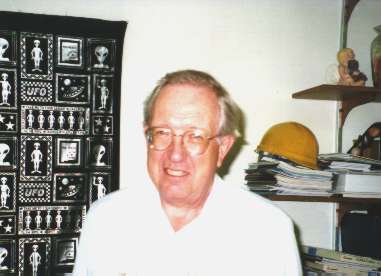
Office: 273 Interdisciplinary Sciences
Faulkner's main professional research interests lie in the theory of stellar structure and evolution. He has investigated single and binary stars in both the Newtonian and relativistic regimes. He has also worked in cosmology and has an abiding interest in Isaac Newton and gravitational topics.
Faulkner is most well known for explaining the nature of horizontal branch stars, for applying gravitational radiation to the theory of dwarf novae (several years before the first binary pulsar was found), for codiscovering the disk outburst mechanism in such systems, and--as "the father of the WIMP"- for a courageously proposed solution to the solar neutrino problem. (He coauthored one of the first two papers on the potential astrophysical effects of what would become long-popular cold dark matter candidates.)
Faulkner has also made extensive studies of lithium-burning in early stellar evolution, deducing from such work that long-used stellar opacities were seriously deficient. (Lithium is an important cosmological probe, while many aspects of stellar structure depend on the values of the opacity. The relevant values of computed opacity coefficients have altered in good accord with Faulkner's deductions from his lithium work.)
In parallel with his astrophysical interests, Faulkner has recently pursued topics in the history of science from Newton to Einstein and de Broglie. He discovered a starkly simple but beautiful theorem on the curvature of the ellipse which could have profoundly altered the form of Newton's "Principia." This theorem, and the two-line derivation of the inverse square law of gravity to which it leads, were published by invitation of the Royal Society of Canada in its premier rapid-publication mathematical journal (only 300 years too late)!
In another gravity related matter, Faulkner has discovered a simple gemetrical way of understanding why things fall (!). He obtains weak-field results much more rapidly than in the conventional approach of general relativity, and also an independent demonstration of the necessity of geodesic motion - normally presented as a plausible hypothesis.
Faulkner is now working on an interpretation of one of Newton's most famous remarks, and, oddly enough, the way in which stars become red giants-by standing on the shoulders of dwarfs!